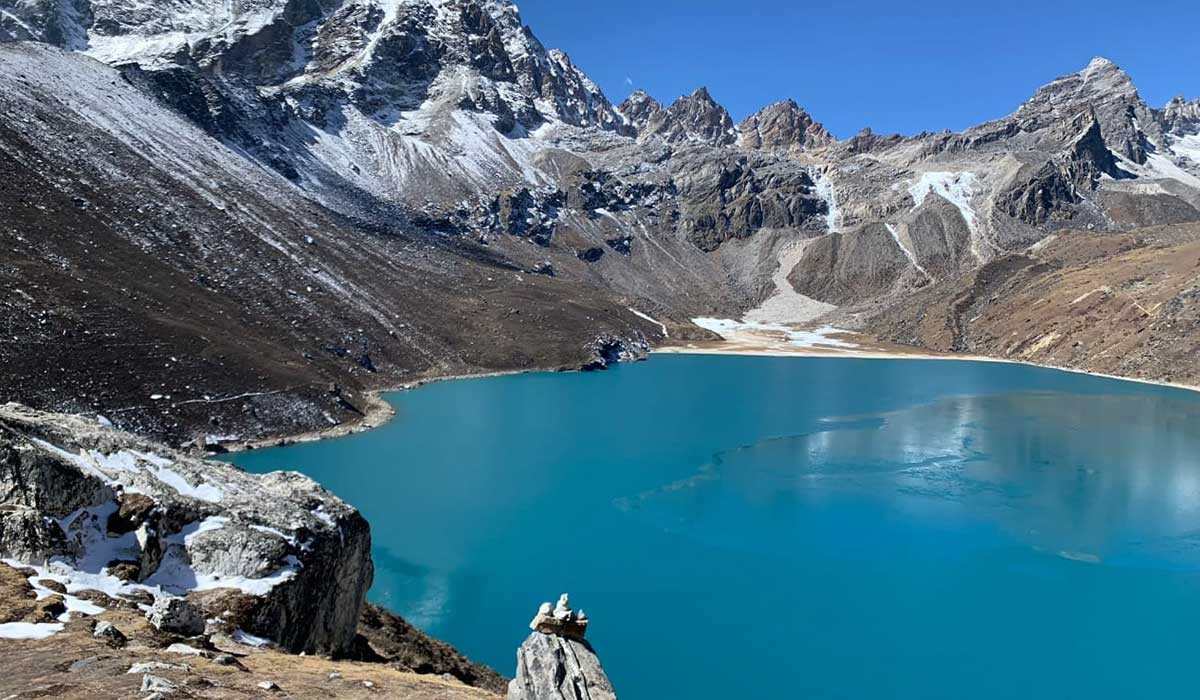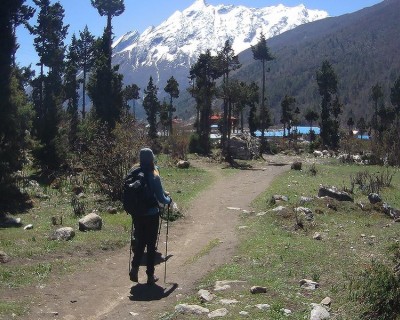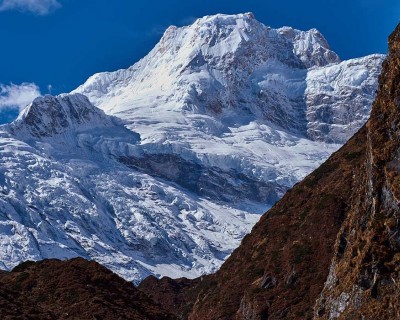Gokyo Facts: Before You Pack
Understanding what to pack for the Gokyo trek requires you to have an in-depth knowledge of the Gokyo region. Gokyo trek packing checklist depends on your trek duration, the time of the year you choose to go there, as well as your elevation gains. Therefore, you must consider the nature of the region and your capabilities and needs while packing for the trek.
The total distance of the Gokyo Valley trek and the walk to its pristine lakes is around 98 km. Located in the northeastern part of Nepal, the trek sets off from Lukla. The trekkers need to tread over rocks and boulders as they pass through villages, forested areas and suspension bridges, before arriving at Gokyo. Every day, you walk for at least 5-6 hours on the rocky terrains, getting all sweaty and tired.
Reaching the summit of Gokyo Ri (5.357m) is the target of the trek. But this comes with the real risk of altitude sickness. You need to be ready to battle the cold nights and days, depending on the time of the year you choose to trek to Gokyo.
Spring and autumn are the best times to trek as they offer clear skies, moderate temperatures and a pleasant walking experience. Winter and monsoon can be harsher on you with freezing temperatures and snow, as well as heavy rainfalls and landslides, respectively.
If you decide to choose our 10-day Gokyo Valley trek, your accommodations comprise basic teahouses with limited electricity, especially in higher altitudes. Other facilities are also minimal, requiring you to have fewer expectations and be self-reliant.
Only if you are well aware of these basic facts about Gokyo can you pack appropriately for the trek ahead.
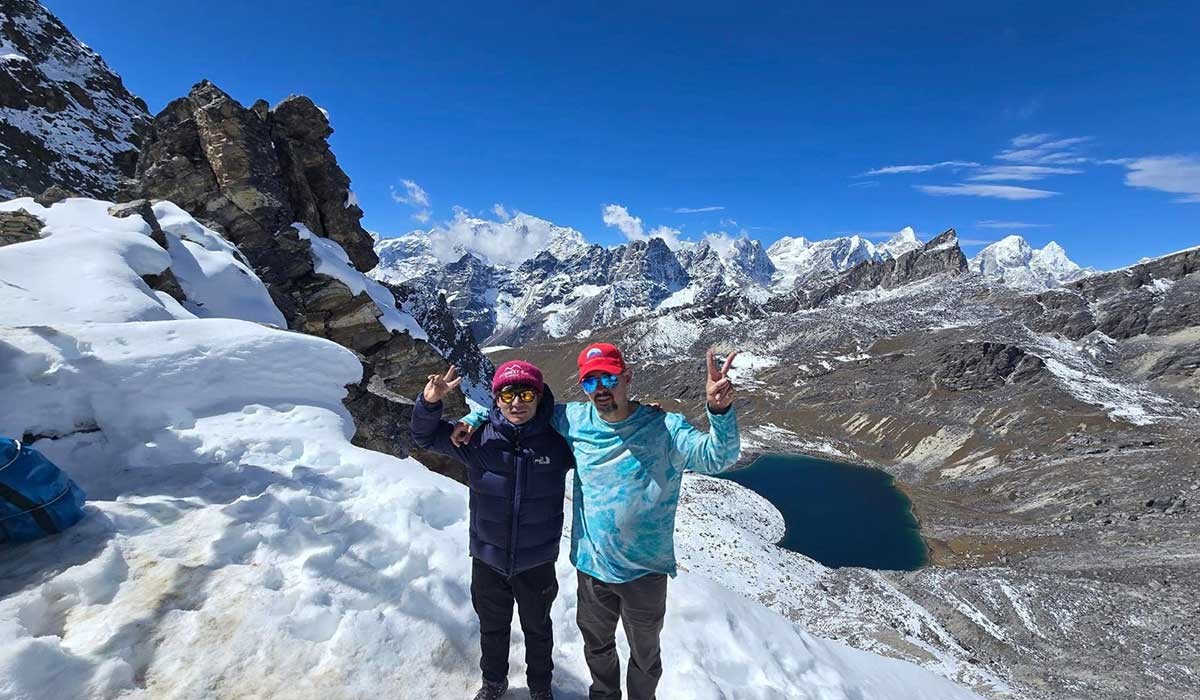
What to Pack for the Gokyo Trek
Your trek to Gokyo Valley begins at a lower elevation of Lukla with a moderate temperature and gradually heads to higher altitudes with frigid temperatures. The varying temperatures, and landscapes require you to pack things with caution.
Here is a list that serves as a guideline for you to help you pack for your Gokyo adventure. Remember that you don’t need to pack all the items listed here from your home. Many of them can be either bought or hired in Kathmandu.
Important Documents
- Pack a valid passport along with passport-sized photos that will be needed for a visa and trek permits. Pack them safely in a zip-lock bag.
- Carry photocopies of your passport, visa form available at the Tribhuvan International Airport, and documents of your travel insurance.
- Bring some foreign currency in cash for paying in restaurants and hotels, for buying drinks and food, and for buying a visa for Nepal at the airport.
- Pack your credit and debit cards, ATM cards and travel cards for addressing monetary needs.
- Carry Nepali rupees when trekking to buy snacks, personal items, as well as missing gear if needed.
Trekking Gear
Backpacks
You need two bags. A duffle bag or rucksack for a porter to carry your luggage. It should be about 50- 60L. You also need a small daypack (20- 30L) that can carry everything that you require for a day when trekking.
Trekking poles
Trekking poles are useful when you are ascending steep and rough trails leading to Gokyo Ri. They offer enhanced stability, protecting your knees and joints from injuries.
Sleeping Bag
A winter-rated sleeping bag (rated between -10°C and -15°C) ensures a good night’s sleep at higher altitudes. The blankets at teahouses might not always make you warm when the night temperature drops below freezing. So, get a sleeping bag.
Hydration
Pack a reusable water bottle to stay hydrated. Buying bottled water is not possible as you reach higher altitudes. Also, do not forget to pack water purification tablets or a filter bottle to enjoy safe drinking water.
Headlamp
Carry a headlamp with extra batteries. It is essential during power outages. Also, they are important when you need to start the trek in early mornings when it is still darker outside.
Packing Cubes
In case of rain or snow, they keep your important items dry while also helping you to stay organized. Doing so, you don’t need to ransack your bag to find a small item.
Clothing Essentials
Layering is the mantra to packing clothes when trekking to Gokyo Valley. You need to pack your apparel based on both the altitude you reach and the season you are there. Here is a breakdown of the list:
Base Layer
Opt for inner thermal wear, either made of synthetic or merino wool. They are warm, breathable, and help retain body heat. They dry quickly and manage moisture in your body.
Mid Layer
This layer allows for insulation. You should pack a fleece jacket or synthetic puffer for that. Don't forget to add moisture-wicking shirts and trekking pants.
Outer Layer
You need a waterproof and a windproof jacket and pants to face rain, snow and wind of the Himalayas of Nepal. Also, pack a lightweight down jacket.
Footwear
Get yourself sturdy and waterproof trekking boots. You should choose the ones that are designed in a way to avoid blisters during the daily treks. Also, add light sandals for the teahouses following the trek. Pack at least 3-4 pairs of wool socks.
Hats and Gloves
Carry a sun hat, a warm woolen hat, and a scarf to protect yourself from sun exposure and freezing temperatures. Also pack two pairs of gloves — inner gloves (for warmth) and waterproof, insulated outer gloves (for protection from cold and windy weather).
Personal Hygiene and Toiletries
Carry the items of your hygiene and toiletries according to your needs and preferences. In case you might miss packing the basics, you can refer to this list:
- Travel-size toothpaste and toothbrush
- Biodegradable soap for environment-friendly washing
- Wet wipes to address the lack of showers, and when you are sweaty on the trail
- Hand sanitizer for hygiene
- Toilet paper, as most teahouses do not provide it
- Quick dry towel for personal use at the teahouses
- High SPF sunscreen to protect against the UV rays
- UV-protection sunglasses
- Lip balm with SPF is the best treatment for cracked lips
- Menstrual hygiene products like tampons, pads, and menstrual cups, as per your preference
For First Aid and Health
Your trekking trail has no pharmacies beyond Namche Bazaar. Therefore, you must be well-equipped with a first-aid kit and necessary medications to deal with injuries and other health issues.
- Diamox to prevent altitude sickness
- Personal medications
- Basic painkillers
- Antidiarrheals
- Blister plasters
- Electrolyte power or oral rehydration salts
- Hydration salts
- Antiseptic creams
- Band-aids
- Nail clippers
- Tweezers
Electronic Needs
With limited availability of electricity as you ascend higher during the Gokyo trek, you might face trouble in charging your basic electronic devices. To prevent the problems, carry these things with you:
- Power bank
- Portable solar charger
- Universal travel adapter for charging at lodges
- Smartphone, camera, or GoPro for photography purposes
- Dry bags to store these electronic devices
Food and Snacks
They are optional items on your packing list, but they can be useful if you need a quick bite or a change of taste after eating the repetitive meal of Dal Bhat, noodles and eggs.
You can pack:
- A mix of dried fruits, trail snacks like granola or energy bars
- Instant coffee, tea bags, powdered creamer or hot cocoa packets
- Flavored electrolyte sachets
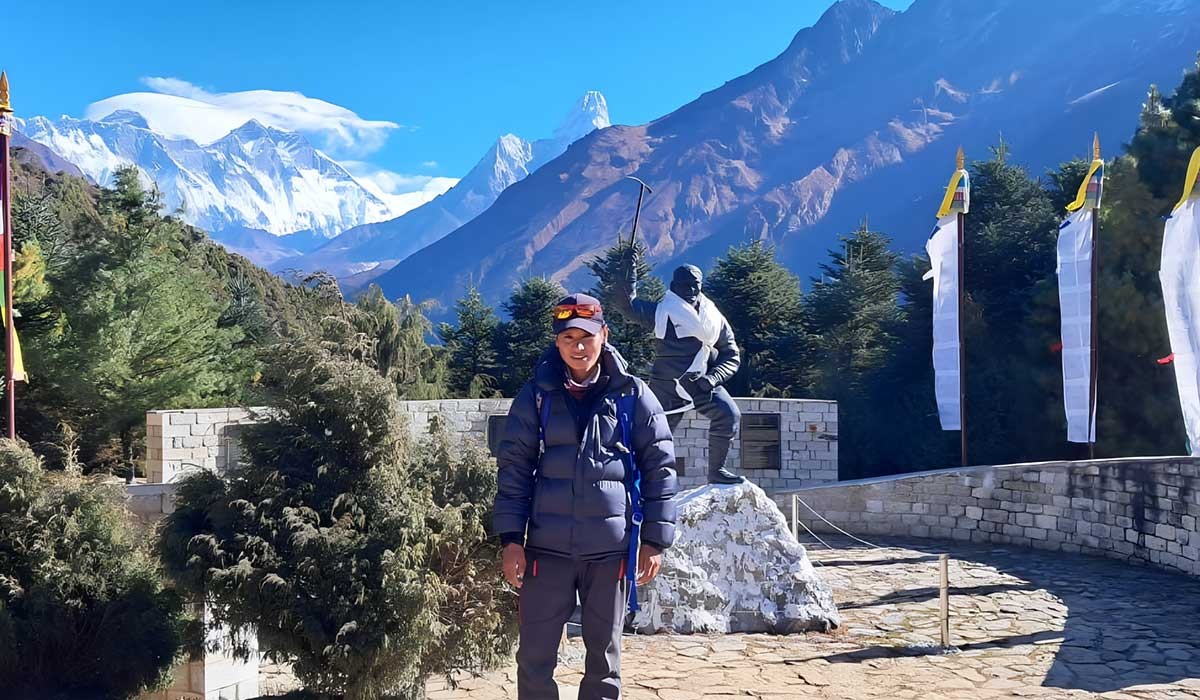
What Not to Pack for Gokyo Trek
Overwhelmed by the trek itinerary and difficulty level, one often tends to overpack for the Gokyo trek. But it is the biggest mistake you commit as a trekker because it only adds to the load, and most of the stuff does not get used. So, careful packing is essential to make your luggage lightweight but full of all necessary items.
Now that you know what to pack for the Gokyo Trek, check out this list and decide on what you can skip from your packing list:
- Jeans and heavy cotton clothes, as they absorb sweat and take a long time to dry
- Avoid carrying a laptop to reduce the weight of your backpack
- Limit packing to 2-3 base layers, and reuse them on the trail
- Opt for an e-reader of audiobooks rather than a hardcover book, as they are heavy
- Avoid packing thick sleeping mats
Preparing a well-planned Gokyo trek packing list ensures a comfortable journey. Make sure to carry the right gear in the required quantity, avoid packing unnecessary items, and set off on the journey.
Happy packing!
